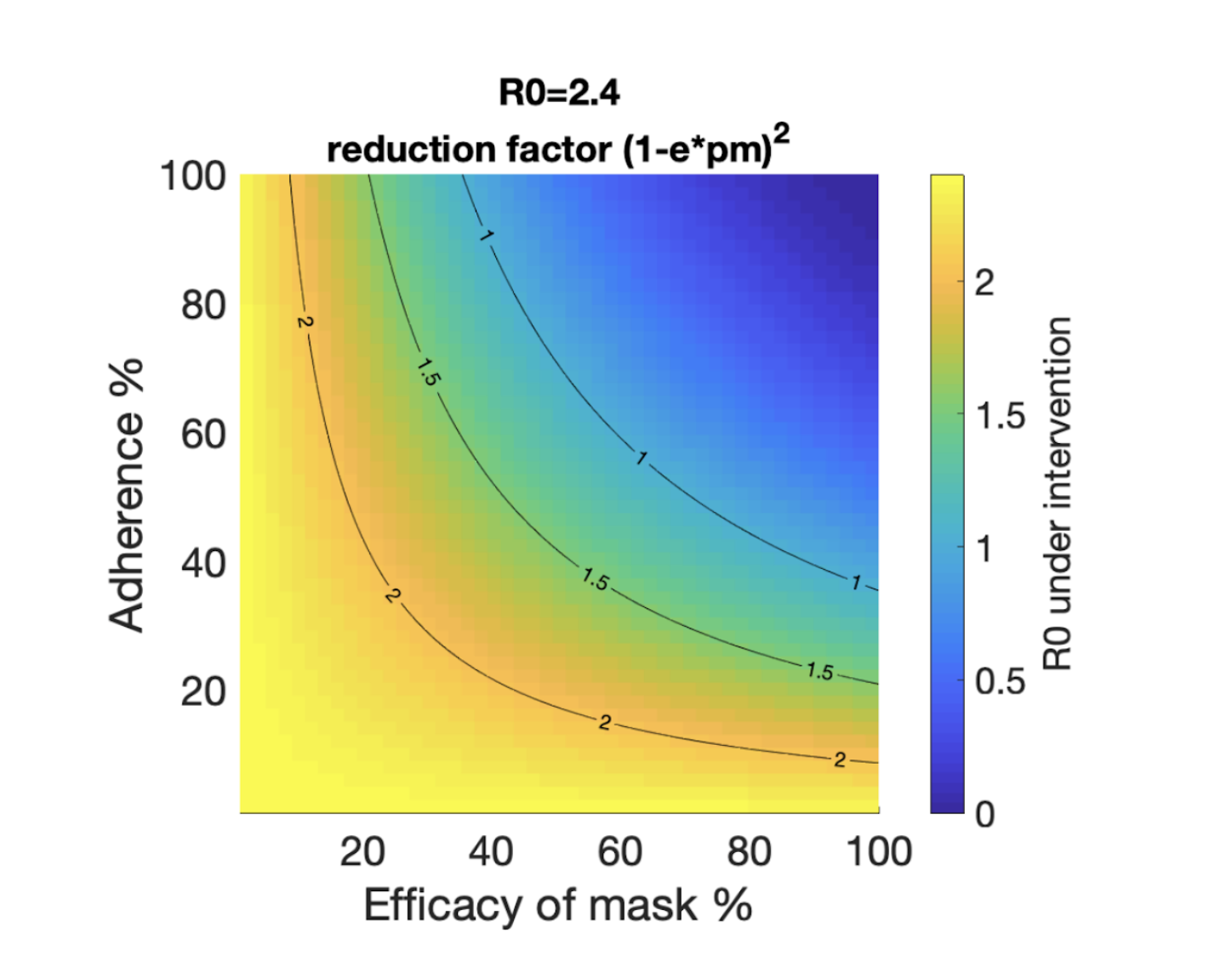The Science behind Masks
We’re making 3D Print-Knit Maskº 2.0 available for the public.
We started the Maskº initiative to help support the PPE shortage for front-line workers by utilizing our full supply chain and rapid manufacturing processes. In light of the Surgeon General’s new guidelines, the widespread use of cloth-type face masks has been urged to stem community transmission of COVID-19. As a company built on science, we believe it’s important to understand how masks play a role in suppressing viral spread and to do our part to support these broader public health efforts.
The Math behind Epidemics: Exponential Spread Through Communities
The key number to track during the spread of a disease is a metric called the Reproductive Number, or R0 - it measures the number of new infections that can be uniquely attributed to an infected person. Diseases that have an R0 greater than one (1) will grow exponentially, while R0 less than zero (0) will eventually plateau and subside as fewer people become infected with each cycle. This is commonly known as “exponential decay”.
The current analysis of the coronavirus states an R0 of 2.3. This is what this looks like for a population similar to the US:
The good news is that while the genetic makeup and protein structure of the virus do determine some parts of the Reproductive Number, we can reduce the R0 through “non-pharmaceutical interventions” - actions intended to slow the transmission rate (or “flatten the curve”). In this interactive model you can modulate the variables with base data from the most recent studies and reports.
In the graph above and the one below - we assume a population the size of the US with 325M people and compare an R0 of 2.3 (no intervention) and an R0 of 0.99 with interventions. The difference is drastic when compared here on the same scale:
In the absence of a vaccine and widespread testing, the suppression strategy recommended by the CDC and the Surgeon General is driven by two primary public health interventions - social distancing, and the new guidance to wear cloth face coverings and masks. Both methods are intended to reduce our R0.
The Role of Masks in Reducing the R0
While the N95-type respirators and surgical masks are intended to protect healthcare professionals from aspirating or breathing in droplets, the primary role of masks worn by the public is to suppress spread by capturing droplets that we all emit while coughing, sneezing and talking - thereby preventing the infection of others.
This is particularly important when limited testing is available, as asymptomatic and pre-symptomatic individuals may still be contagious.
In a literature-review from Brown University’s Medical School - regarding the use of face masks by the public, a model is proposed that shows the correlation between:
The effectiveness of mask (how well it prevents droplets from being transmitted through the mask)
AND
The adherence level (how many people use it, and whether they wear it properly).
It posits that with 60% overall mask efficacy and 60% adherence by the public, we can achieve an R0 that is less than one - leading to suppression of virus before vaccination is feasible.
Increasing Adherence of Mask Usage: This is largely driven by the widespread availability of and adoption of a mask wearing-culture, but making masks comfortable enough for all-day wear is also a large factor. We believe that we can play a role here by increasing the availability of effective masks, especially ones designed for all-day comfort.
Defining Effective Masks: The effectiveness of a mask filter is a function of three primary factors that determine how well it traps virus-containing droplets, preventing them from passing through the mask itself:
Fit - For clinical settings, surgical masks and respirators create a tight seal to prevent the ingress of the viral particles. For public use, the primary focus is to cover the nose and mouth - the primary source of droplets.
Filtration - This is a measure of both the percentage of particles that can pass through the filter medium of a specific size, and the amount of pressure (or pressure drop) required to move air through the material. A lower pressure drop allows easier breathing.
Fluid Resistance - This particularly matters in clinical settings where individuals are more likely to come into direct contact with human-generated aerosols. For a socially distanced public, most droplets created fall to Earth within a certain range of the individual (though that range is up for discussion).
Using BFE ≥ 95% Rated Filter Media in Maskº:
We are using a certified BFE ≥ 95% filter media in our 3D Print-Knit Maskº. BFE ≥ 95% Filters provides effective and appropriate levels of filtration based on the CDC recommendations for public use.
The BFE ≥ 95% filter is rated for procedural face masks, it has also been rated by Nelson-Labs using the ASTM Standard for Filter Media (F2101-19 - Standard Specification for Performance of Materials Used in Medical Face Masks). A BFE ≥ 95% rating means that the filter has a Bacterial Filtration Efficiency 95% of a representative microorganism (a strain of bacteria) are prevented from passing through. Note: This BFE95 filter is not rated for surgical masks or N95 masks which are ASTM Level 3 masks requiring BFE99 ratings, and per the CDC, such materials and masks should be reserved for use in frontline healthcare.
The Maskº was developed for use with front-line workers utilizing rapid manufacturing techniques, and we will continue to support those efforts to support PPE shortage. Additionally, by making the Maskº available to the public, we are able to support the CDC’s key non-pharmaceutical intervention in this public health crisis by helping make masks more widely available to everyone.





